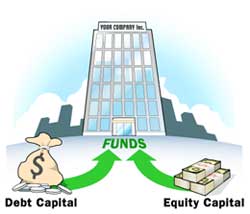5 Reasons Convertible Debt Sucks
 There are two scenarios where convertible debt is typically used: bridge financing and angel financing. I’ve raised convertible debt a few times and I have to say that in most angel funding scenarios it sucks as a way to finance a startup (I think it’s okay for bridge funding, but I’d avoid that too if possible). Why?
There are two scenarios where convertible debt is typically used: bridge financing and angel financing. I’ve raised convertible debt a few times and I have to say that in most angel funding scenarios it sucks as a way to finance a startup (I think it’s okay for bridge funding, but I’d avoid that too if possible). Why?
- It’s complicated. Many founders think part of the attraction of doing convertible debt is that you get to “punt” on a lot of the key financing decisions until “professional” investors do the real work and put a “real” value on the company. Unfortunately, doing convertible debt requires making a bunch of decisions that in total are about the same complexity as preferred equity. For example, you have to write a loan agreement that includes things like default clauses, collateral, interest rates and more. If the loan is secured (e.g. against the IP) then you have to create a separate lien. Also, it’s typical to include a discount for the lenders in the form of a warrant, however the warrant is on an equity instrument that does not yet exist (e.g. on the Series A Preferred) but you still need to decide the term of the warrant and the strike price. Also, most founders don’t raise all their convertible debt at the same time so they end up with lenders with different warrant coverage (big Excel spreadsheet). Then, when it comes time to close your Series A, you can have a problem where the cap table changes on a daily basis because the interest that accrues on the principal converts as well and that changes daily. [By the way, if you do use convertible debt, I recommend you agree to pay the interest in cash after closing Series A to avoid this last problem.] Add to that caps, collars, failure to convert and all of these issues add up and it makes it more complicated to take convertible debt as opposed to equity.
- It sets a bad precedent (or at least fails to set a good precedent). Valuation is just one of the key terms of an investment. I wrote previously on how to evaluate the various terms of an investment. By punting on negotiating the full suite of terms in a round of preferred equity, you are basically leaving it to the Series A investors to negotiate these. And some of them make a big difference (like dividends, preferences, etc.). Most of the time, you’re in a much better situation to negotiate favorable (or reasonable) terms with friendly angel investors than you will be with professional VCs My recommendation is to use the opportunity to negotiate favorable terms with angel investors and these will likely become precedent for future rounds.
- Poor risk adjusted return. If you run a few scenarios (I have), the potential gain for founders is 3-5% ownership after the Series A round and about half that at a successful exit. If you’re lucky enough to get a successful exit of, say $75MM, after raising $15MM of VC and you have 2 founders, you’re talking about +/- $500K potential gain each. Now that’s a ton of money, but the point here is that in the upside scenario you’re looking at a six-figure benefit against which you have to measure and compare the risks. But it makes a big difference in the downside scenario. In a wind-up scenario, the priority of various parties is, from highest to lowest, employees, A/R, secured lenders, preferred equity and common. Yes, founders are at the back of the line, but the secured lenders are slightly ahead of preferred equity.
- It makes it hard(er) to hire. When you kick the can down the road on valuation, you then can’t agree to split the pie with any specificity. For example, you might hire a new executive with a 2% slice of equity that in just 6 months gets halved or worse. As employees become more savvy to this phenomenon, we’re starting to see more complex hiring agreements where new hires get full or partial anti-dilution protection. These provisions can quickly eat up the potential founder equity benefit of convertible debt while simultaneously making it even more complicated to raise the first equity round, not to mention the politics of who gets or doesn’t get protection.
- It creates a perverse incentive. But the biggest problem with convertible debt is that it aligns the interest of your angel investors with future VC investors and against you! Because the debt converts into equity at a price equal to or slightly discounted from what the VCs pay, the lower the price the more the angel investors will own. And often times, the angel investors will have the relationships and connections to VCs (and hence know them better than you do) so it is in your interest to get your angels on your side of the table.
Bottom line: convertible debt works best when there is a high likelihood of an equity round happening very soon (i.e. you’re bridging a few month gap), but if you are raising angel money and want to use convertible debt to avoid setting a valuation, don’t. Raise equity instead.